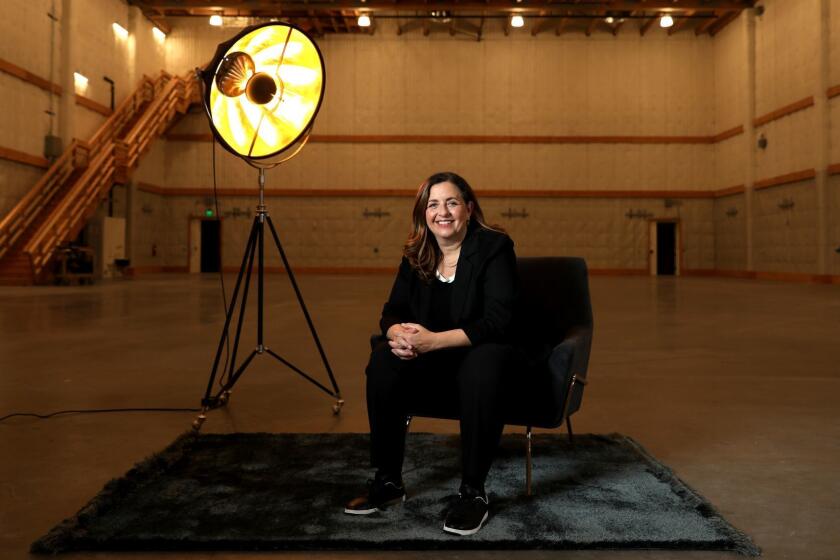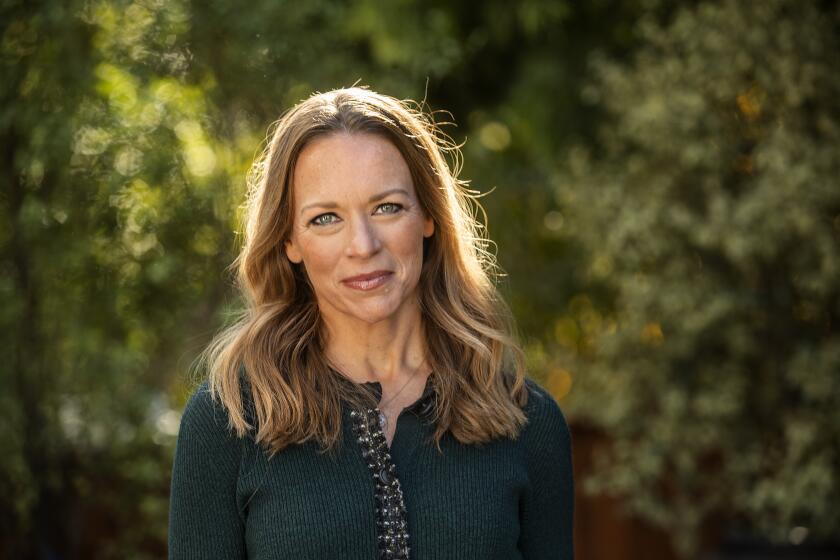YouTube doubles down on kids programs with nine new shows this year
- Share via
YouTube is significantly expanding its original kids programming this year as it looks to grow its audience in the growing global market for family entertainment.
The Google-owned video giant told The Times on Monday that it is launching nine new, mostly animated kids shows this year, up from two in 2020.
The move comes as many streamers are leaning into programming directed at kids, seen as a key way to attract more families to tune in with repeat viewing and build a new generation of viewers.
Many parents and kids already go to YouTube searching for free, ad-supported educational videos or entertainment. The company’s YouTube Kids app — dedicated to content for children — has an audience of 35 million weekly users.
Executives say the new shows reflect YouTube’s global audience, with diverse characters that are from different countries.
“When I was coming of age and growing up back in the ’70s and ’80s and watching TV, I personally didn’t see a lot of characters and people that look like me in the world that I lived in,” said Malik Ducard, vice president of content partnerships. “The importance of diversity and really showing the beautiful range of characters and story and narrative and creators who are telling these really dynamic stories, we think is incredibly important.”
The new programs are: “Super Sema,” an animated series about a female superhero; “BookTube Jr.,” featuring children’s book authors; “The Guava Juice Show,” an animated series with L.A. YouTube star Roi Fabito; next-generation journalists in “Kid Correspondent”; “The Workout Badges,” featuring kid-friendly exercise routines; preschool animated series “Millie and Lou,” “Lottie Dottie Mini” and “The Eggventurers;” and “Supa Strikas: Rookie Season,” a prequel to a YouTube show about a pan-African soccer team.

“Every show at some level fits this big idea of helping kids uncover and develop their unique strengths and passions,” said Nadine Zylstra, head of family, learning and impact at YouTube Originals.
YouTube, based in San Bruno, Calif., has set aside a $100-million fund to pay for the creation of original kids content. A person familiar with the matter who was not authorized to comment said that kids show budgets can range from $250,000 to $500,000 per episode. YouTube declined to reveal budgets for its kids programs.
YouTube doesn’t want to compete with Netflix. How Susanne Daniels is getting ahead of streaming wars
Four years ago, veteran TV executive Susanne Daniels was tasked with an ambitious plan: build a set of original programs that would leapfrog YouTube into a prominent player in the subscription streaming marketplace, competing against the likes of Hulu and Amazon Studios.
The new kids shows will be under YouTube Originals, the division that oversees YouTube’s original productions. At first, the originals team had aimed for its mostly paywalled programs to compete against streamers such as Hulu, but in 2019, YouTube pivoted to focus on fewer scripted series such as “Cobra Kai” (a series based on the 1984 film “The Karate Kid” that moved to Netflix last year) and lean into shows featuring celebrities, music artists and YouTube creators.
In October 2019, new YouTube Originals shows became free with ads. Previously, the original programs were largely behind a paywall.
“What is similar about the kids and adults strategy is that in both cases, we’re trying to amplify voices that are on YouTube or amplify trends that are on YouTube — things we know that are resonating with kids, with families and adults,” said Susanne Daniels, YouTube’s head of original content. “We tap into things that are happening in the zeitgeist and reflect that back to kids in a thoughtful manner.”
This year, YouTube Originals aims to release 75 to 80 shows, fewer than the 88 shows that were released in 2020, partly due to shifts during the COVID-19 pandemic. One new program premiering on March 23 is a documentary that explains the story behind singer and actress Demi Lovato’s drug overdose.
The new kids shows will appear both on YouTube and YouTube Kids. Programs will target preschool audiences ages 2 through 6 and schoolchildren ages 7 to 10 or 11.
In addition to the nine new kids series on track to premiere this year, there are an additional 25 children and family-related projects in development. Prior to Monday’s announcement, YouTube Originals had cumulatively launched just eight kids shows, including two in 2020, since 2017.
YouTube executive Kelly Merryman has been instrumental in improving content partnerships with large media companies like Disney and Viacom.
YouTube, which has more than 2 billion monthly users, has thrived during the pandemic, with advertising revenue up about 46% to nearly $6.9 billion in the fourth quarter, compared with a year ago, according to an earnings report by Mountain View, Calif.-based Alphabet, Google’s parent company.
Because YouTube is supported by advertising, it has raised past concerns from federal regulators over ad-supported kids content. In 2019, YouTube and Google reached a $170-million settlement with the Federal Trade Commission and the New York attorney general that alleged YouTube collected data on children younger than 13 without their parents’ consent.
Since then, YouTube has changed the way it handles advertising on content for children. The company says it limits data collection of videos for kids to only what is needed to support the operation of the service and doesn’t serve personalized ads on those videos.
While YouTube remains a dominant player in free, ad-supported video, it faces competition for consumers’ time from popular apps such as TikTok or streaming services such as Amazon Prime Video. As the streaming wars continue to escalate, companies are figuring out what original content they can produce that will be unique enough to their platform that users will tune in.
“Maybe a situation for YouTube is they realize what people identify with the most is user-generated content and a group of stars who have developed and built their own audience via YouTube, and taking advantage of those people who have done that is how to best differentiate versus trying to be another Netflix,” said Dave Heger, a senior equity analyst with financial services firm Edward Jones. “Spending billions of dollars on your own content at this point might not be the best path for them in an increasingly crowded market.”
As Netflix faces a drop in U.S. subscribers, the Silicon Valley streaming giant is expanding animated kids shows in India and other countries. Its new series “Mighty Little Bheem,” was developed in India but has become a global hit for Netflix.
Video creators such as Fabito said that YouTube was ideal for his new animated series, “The Guava Juice Show,” about a magical bathtub, because he’s already built a strong following of fans there. His channel, “Guava Juice,” which he started in 2016, has 16.5 million subscribers. Funny videos on his channel include Fabito jumping into a bathtub of blue Jell-O or lying down and eating in a bathtub of cheese balls.
“It means a lot to me just knowing that I could put something on YouTube because that is the foundation of the channel,” Fabito said. “It just makes perfect sense for it to be there.”
YouTube’s vast global reach also appealed to producers. Kenya-based Kukua is launching a new animated series “Super Sema” that will air on March 8 on YouTube featuring a Black superhero named Sema, which means “to speak up” in Swahili.
Kukua’s chief operating officer, Vanessa Ford, said it was important for the new series to be authentic. The story takes place in an African-futuristic world and includes voice artists from Kenya, an idea that was supported by YouTube, Ford said. American broadcasters had told Kukua that “they weren’t sure their audience would identify with that accent or if it would be off-putting,” she added.
“We’re happy that we found a home with YouTube, who supports that authenticity and also, who knows that this next generation of children are so global ... so diverse, so globally-minded that carrying different accents, learning a few key words in every language, is what makes the world a better place.”
More to Read
Inside the business of entertainment
The Wide Shot brings you news, analysis and insights on everything from streaming wars to production — and what it all means for the future.
You may occasionally receive promotional content from the Los Angeles Times.













